 0
0
 0
0
Since entering the domestic market in 2012, the French independent creative agency FF (Fred & Ferry) Shanghai has quietly traversed over a decade. The now-familiar term "creative hotshop" also arrived in China alongside FF. While maintaining its international creative identity, FF Shanghai has deeply integrated with local creative culture, finding a development path uniquely suited to itself.
Recently, ADTODAY had the privilege of interviewing Huang Feng, Partner at FF Shanghai, to discuss the localization journey and insights of an international creative hotshop.
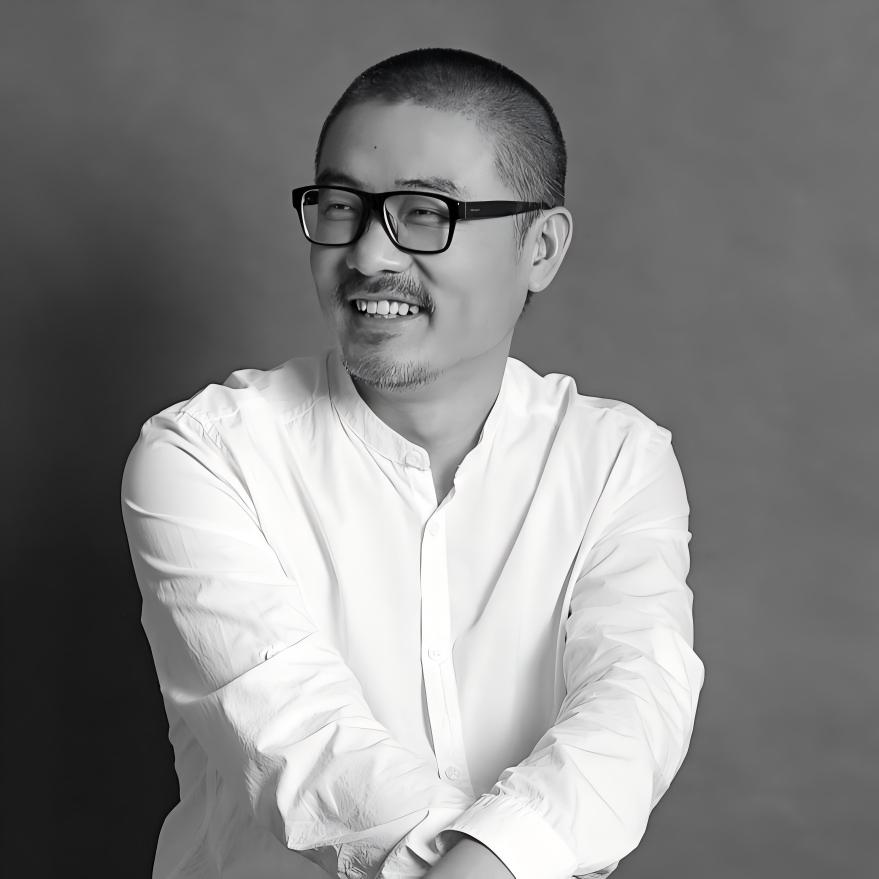
Huang Feng, Partner, FF Shanghai
——
From Paris to Shanghai: Keeping Creativity First
The journey from Paris to Shanghai for FF Shanghai bridged not just geographical distance, but also the chasms of different cultures, market environments, and consumer demands. How to preserve its international essence while achieving local relevance in this unfamiliar yet challenging landscape became a critical challenge FF Shanghai had to face.
ADTODAY: What was the impetus behind the company's decision to establish a team in Shanghai?
Huang Feng: FF was originally founded in Paris, France. When planning overseas branches, location became a key focus of our discussions. Both Singapore and Hong Kong were considered.
Many foreigners might not realize that observing the Chinese market from the perspective of Hong Kong or Singapore creates a sense of distance. While geographically close to mainland China, there's a distinct cultural and experiential disconnect. The upbringing and lifestyles of people in Hong Kong and Singapore are fundamentally different from those in mainland China. This difference extends beyond business to deep-seated cultural understanding and market sensitivity.
In contrast, Shanghai was our ideal choice. It avoids the overly strong regionalism of some lower-tier cities, yet isn't a purely outward-facing gateway city. It strikes a perfect balance.
As a highly international metropolis, Shanghai possesses not only strong receptiveness to global culture but also a deep connection to China's vast domestic market. It absorbs international perspectives while remaining deeply rooted locally, serving as a crucial hub linking China and the world. Based on this strategic consideration and our deep understanding of the Chinese market, we ultimately decided to make Shanghai our first overseas stop.
ADTODAY: As China's entrepreneurial atmosphere intensifies, many domestic creative hotshops have emerged. As an agency with an international background, what do you see as FF Shanghai's key differentiators?
Huang Feng: There are distinctions between international and domestic creative hotshops. As an agency with global roots, we must consider two aspects when evaluating a good piece of work.
On one hand, we must consider its acceptance and appeal within the local market. The work ultimately targets local consumers; only their recognition allows us to gain a foothold here. On the other hand, the work should possess the potential to be recognized by the international market or our peers. We are part of the creative community. Creating work isn't just about completing projects; it carries a sense of pride. We hope each piece is not only accepted locally but also gains recognition internationally. This is extremely important to us.
Simultaneously, this presents a challenge. Every time we develop a concept or creative idea based on local insights, those insights cannot be limited to local understanding alone. Their resonance and acceptance within the broader international market and industry professionals is also a vital criterion for us.
We reject formulaic creative methods because, in my view, the essence of creativity lies in breaking all methodologies. Relying on fixed formulas turns creative work into factory production, stripping it of originality. We strive to approach every workflow, case study, or proposal without referencing past success standards, starting from scratch each time. We build from client needs, current consumer demands, and the creative media landscape to craft something interesting and novel.
This approach has pros and cons. The benefit is the freedom to break rules and generate unique ideas. The drawback is evident: success isn't guaranteed every time, and it's never easy. Following a standard might be hard the first time, easier the second, and effortless by the third. Starting from zero is a huge challenge each time. Sometimes it yields an exceptional solution scoring 90, other times it's a struggle just to reach the passing mark of 60.
Difference drives innovation. Creativity shouldn't be boxed in by formulas. We enjoy this process of starting fresh, breaking previous thought patterns, and creating something different each time.
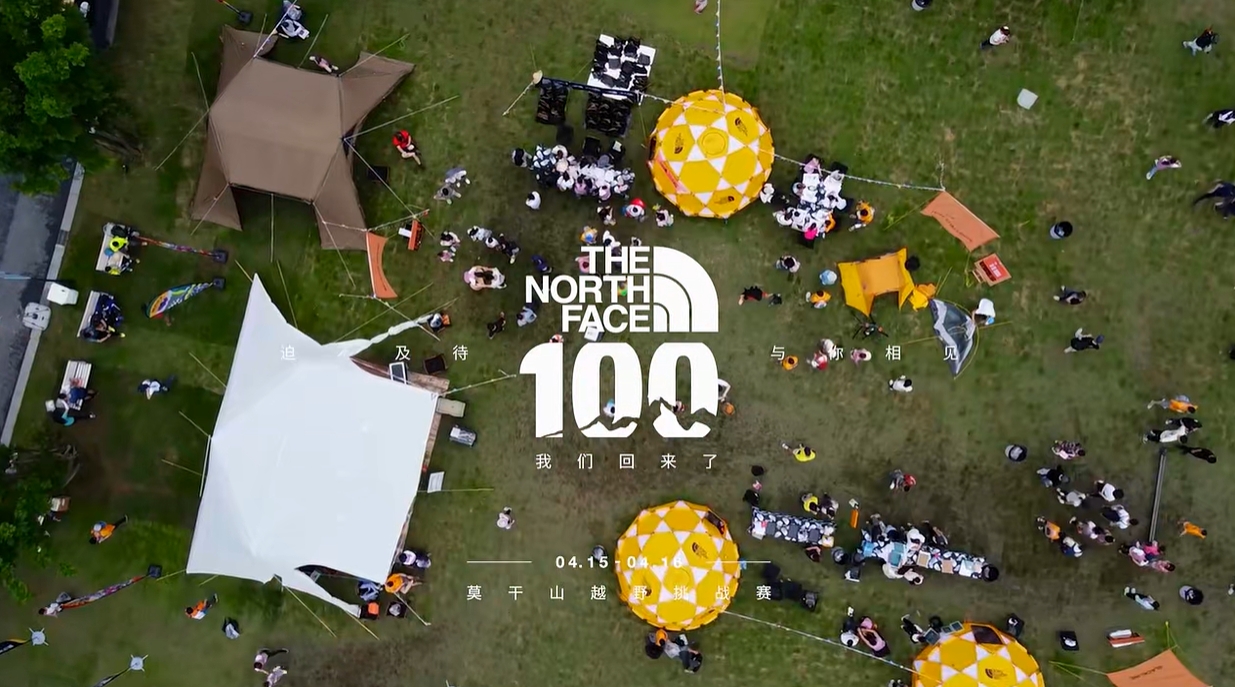
THE NORTH FACE - "100 Reasons to Return to the Wild"
ADTODAY: What differences do you see between Chinese and international creative hotshops?
Huang Feng: Having worked abroad for years, I notice clear differences, especially during pitches. In China, clients often request "reference videos" during presentations. When I first arrived, I was puzzled – how can you call it creativity if references already exist? If references are easily found, where does the originality lie? This reflects a search for security, a reliance on safe methodologies by both brands and agencies.
FF pursues being the first to try and break new ground before a style becomes mainstream, and we avoid repeating our own past successes. The joy of creativity lies in discovering new styles and achieving breakthroughs daily. Repeating formulas or referencing is the easy path in today's market, but we choose not to take it. We'd rather spend more time finding something new, even if it risks failure or lower traffic, than chase viral formulas and get stuck in repetition.
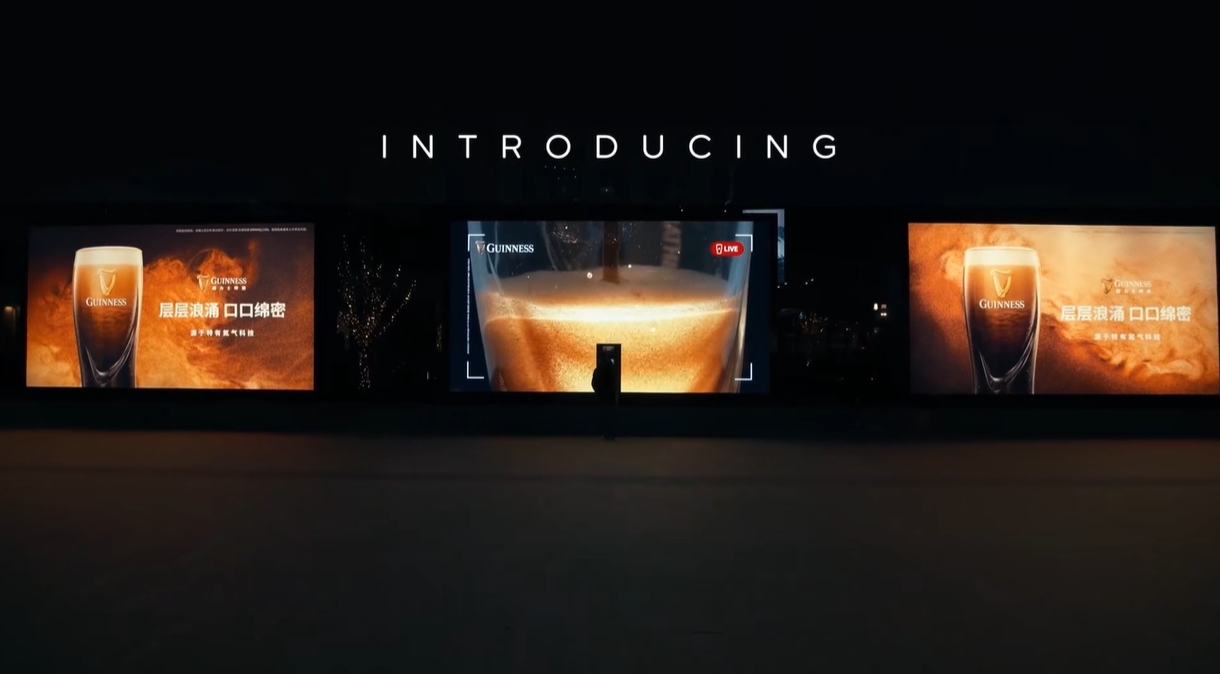
GUINNESS健力士《健力士街头片场》
ADTODAY: What's the meaning behind FF's Chinese name, "Fó Hǎi Fó Ruì" (佛海佛瑞)?
Huang Feng: Our company name "佛海佛瑞" is a transliteration of the founders' names, Fred and Ferry, which are French. I joined FF directly after my Master's in France, just as the two founders returned from the US to start the agency – a fortunate connection. When I decided to return to China, we discussed needing a Chinese name. We brainstormed many ideas, but ultimately wanted it to reflect their creative vision and spirit. They are exceptionally inclusive of different cultures, never wanting to be confined as just a French company, but emphasizing multiculturalism.
Fred loves the ocean, seeing it as all-encompassing, able to embrace cultures from different countries. In China, Buddhism also embodies great inclusivity. Ferry, always smiling, shares a similar temperament. Plus, Ferry has a very Buddha-like appearance. Hence, "佛海佛瑞" (Fó Hǎi Fó Ruì). This name embodies their attitude of cultural inclusivity. Creativity shouldn't be limited to one culture; sparks fly when different cultures collide.
——
Using AI to Create Real, High-Quality, Emotionally Resonant Content
Facing market changes, FF Shanghai has its own principles and adaptations. Currently, AI and digital technology are strong tailwinds, bringing revolutionary changes to creativity. From the intricate conception of traditional creativity to the deep empowerment by AI, FF Shanghai insists on evolving while staying true to creativity's core. At the intersection of technology and creativity, we explore more possibilities to create more valuable marketing solutions for brands.
ADTODAY: We see FF Shanghai has an initiative called "AI Imagination." Can you introduce this product? How does it differ from other AI marketing tools on the market?
Huang Feng: As early as ChatGPT's launch two years ago, we keenly recognized AI's creative potential and committed to using it for creation. As a creative, I maintain high openness and sensitivity to technological innovation. Each wave of new technology brings novel ways for creative expression, which excites us and fuels our passion for exploration.
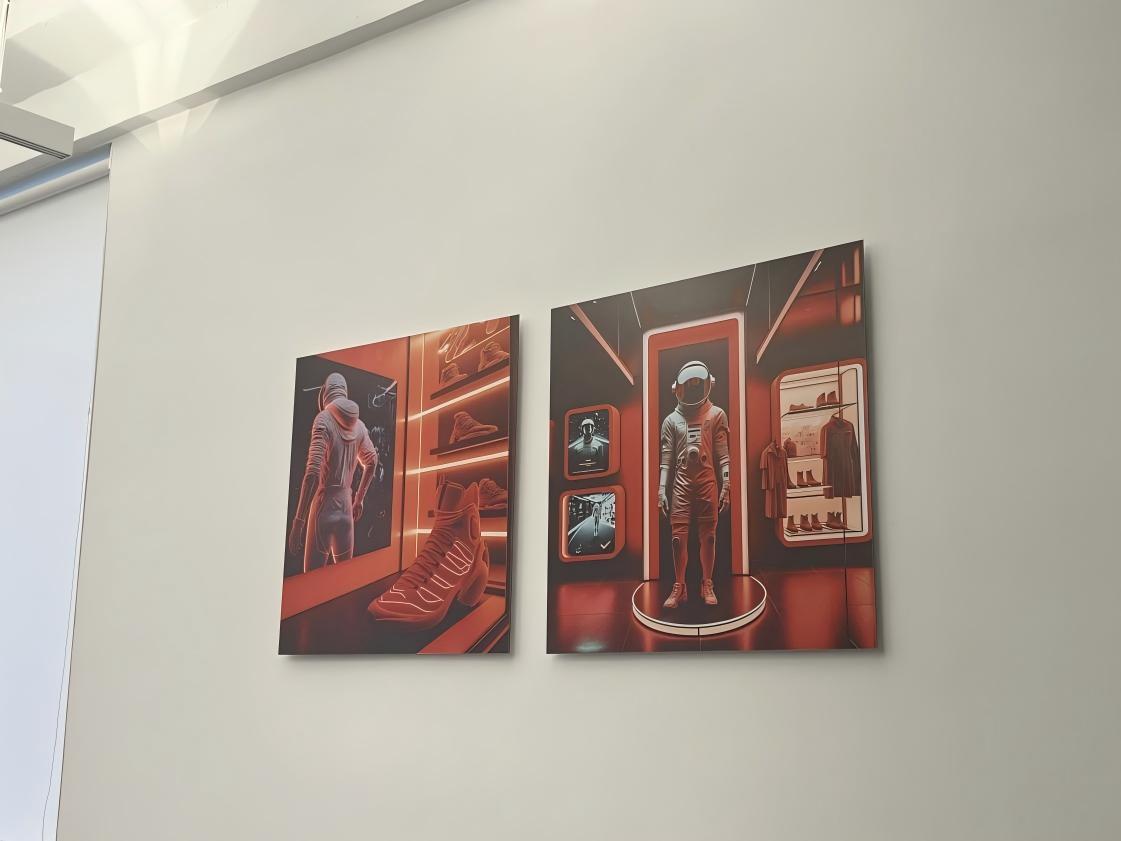
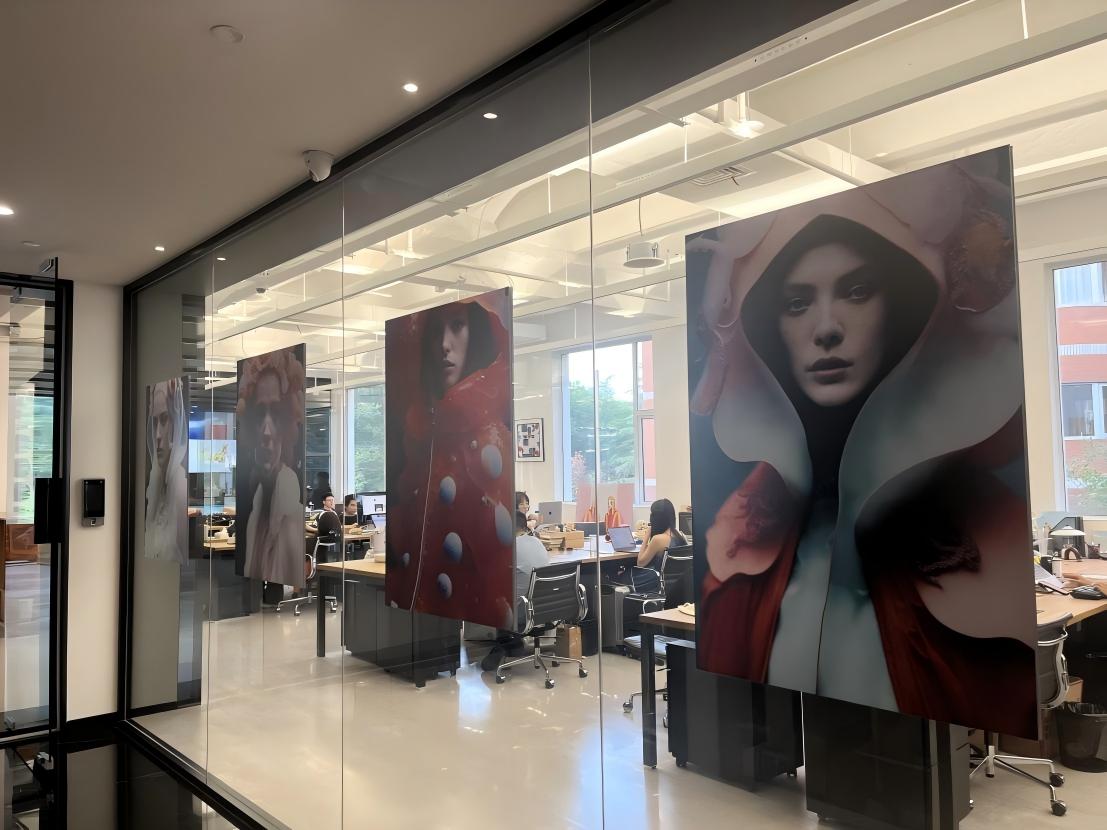
We firmly believe AI is not just a transformative force for the creative industry, but potentially for the entire progress of societal civilization – akin to a new industrial revolution. For service companies, AI significantly boosts work efficiency and content output efficiency. While AI hasn't yet become completely irreplaceable, it's already integrated into multiple stages of our workflow, including preliminary strategy, research, data collection, creative derivation, pitch presentations, and post-testing.
"AI Imagination" focuses on AIGC (AI-Generated Content) production. Our goal is for AI to output brand content ready for direct deployment and publication, not just demos. We emphasize that AI-generated visuals must avoid a "plastic feel," possessing humanity, emotion, and character – expressing genuine human emotion like photography, illustration, or hand-drawn art.
Many clients resist AI work because the output often falls short of aesthetic expectations. Therefore, in training and using AI, we prioritize achieving realism. We aim for work indistinguishable as AI-created, focusing on how to use AI to create real, high-quality, emotionally resonant content. We emphasize adaptability, emotionality, and authentic humanity, combining this with our expertise in luxury and fashion aesthetics to make AI content more artistic.
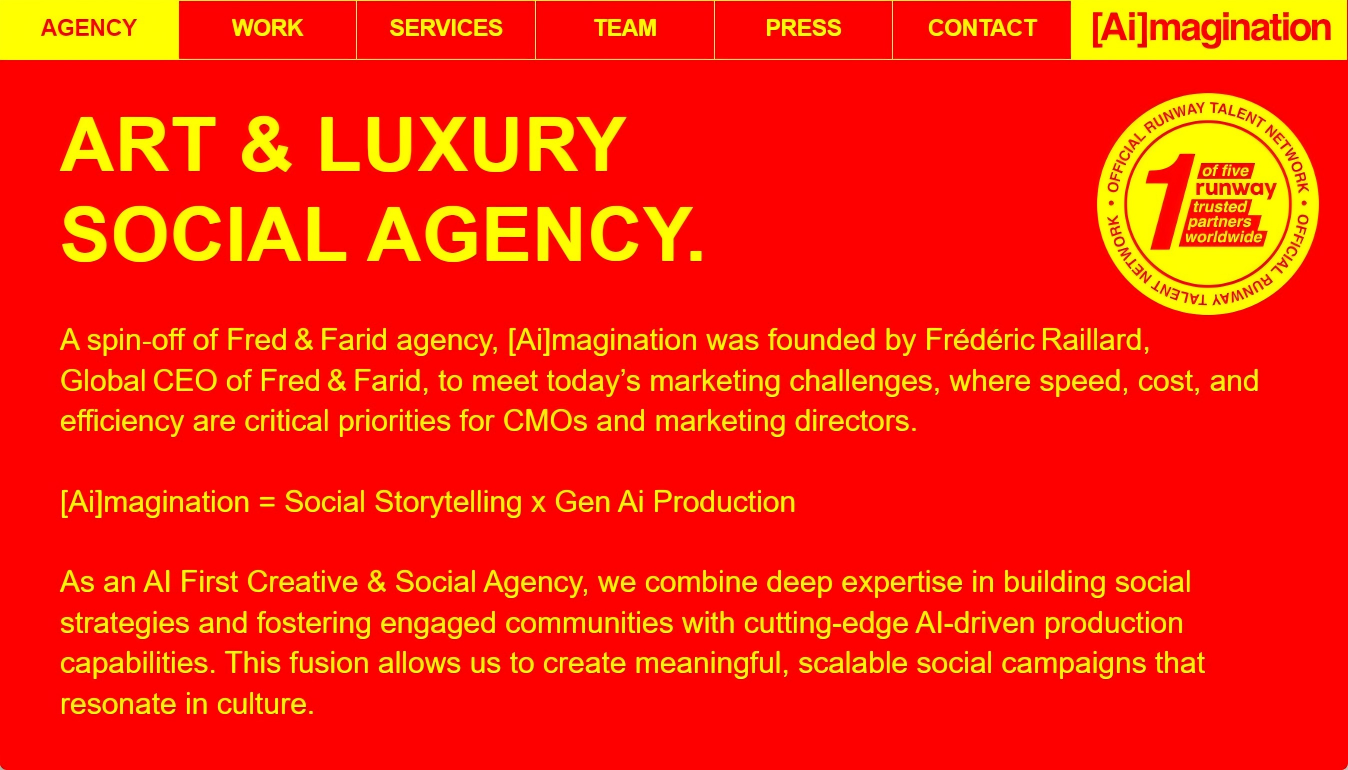

ADTODAY: Do clients question the value of AI-generated work?
Huang Feng: Clients aren't paying solely for production; they're investing in the entire process cost covering creative ideation, overall strategy, and execution. AI is merely a production tool; the core value lies in the creativity. We first need to build a complete concept, then use AI to simulate and generate content. This entire process requires significant time and effort. For example, creating a single AI film, from planning to output, takes about 100 work hours – roughly two weeks of work at 8 hours per day.
Compared to traditional production, we save considerable costs. Previously, producing a film, from concept to launch, involved producers, filming, editing, hiring various personnel, renting locations, transporting equipment – costs could run into hundreds of thousands or even millions of RMB. Now, using AI, a similar project might cost only tens of thousands while meeting quality standards for deployment.
However, the company's current use of AI is more exploratory – actively embracing new technology and adapting to industry shifts. It's not a business model reliant on AI to sustain operations or generate profit. We are learning, accumulating experience, and adjusting. We believe the future creative industry's production workflow may be reshaped by it. Therefore, the fee represents professional judgment, aesthetic control, and the understanding and practice of technological innovation.
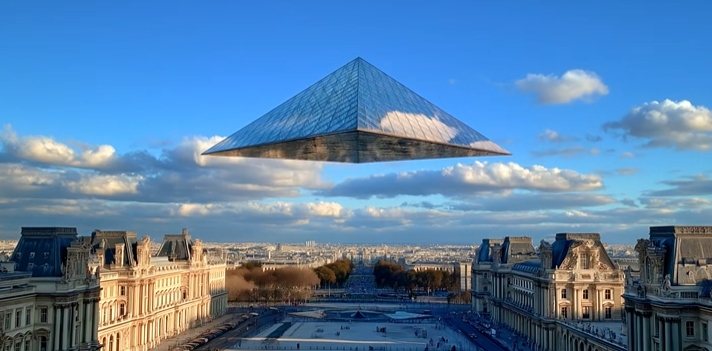
AI短片《明天 TOMORROW》
ADTODAY: Facing society's fast-paced, short-attention-span rhythm, longer ads struggle to retain audience attention. What's your view on this phenomenon?
Huang Feng: I don't think we should dismiss longer formats outright. Depending on different needs and target audiences, the form and purpose of films vary. Some films serve the brand; the target audience might not care about length at all – the thematic direction is key. Maybe no one watches the full 8 minutes, but the act of making that 8-minute film is part of the event marketing. For instance, hiring a renowned director for a film creates buzz and discussion, achieving the goal even if few watch it entirely. People seeing the headline, understanding it showcases great photography or a famous director, might be enough – watching it isn't always decisive.
People today live fast-paced, high-pressure lives and find it hard to engage with long, boring content. The era leans towards entertainment. Ultimately, we must focus on consumer needs, not just the industry's perspective. However, from a creative standpoint, if we haven't tried something, we should. Our agency might bravely proceed with an 8-minute film knowing the market dislikes them, just to try it once. But after doing it once, we likely wouldn't want to repeat it, preferring to experiment with new approaches – like a one-second ad, or 100 one-second ads, which might outperform a single 100-second ad.
Ads can be categorized as creative films or marketing/sales films. We rarely get briefs for pure marketing films, but when we do, we get excited. Finally, a chance to challenge ourselves with a 5-second elevator ad! It's interesting to see if we can do it well. Tackling such challenges is quite fun; we approach it with a playful mindset.
Overall, we aspire to make ads people enjoy watching, ads that don't annoy them. That's the most basic requirement, and it's a goal we constantly strive for.
——
Navigating Brand Globalization
In recent years, with the rise of Chinese companies going global, advertising agencies have begun investing in strategies to leverage their strengths in assisting Chinese brands with their overseas ventures. Naturally, this process also involves facing various challenges. For FF Shanghai, with its international perspective, we have developed our own service capabilities.
ADTODAY: Does the company also assist Chinese companies with their globalization efforts?
Huang Feng: In every era, every Chinese brand aspiring to success needs to expand into the global market. While "going global" has become a hot topic in China over the last two years, we've been serving brands in their globalization efforts for a decade. We've participated in projects for brands like WeChat Pay, VIVO, and OPPO expanding into Southeast Asia and other overseas markets. From strategy formulation to big idea conception, down to localized execution tailored to the target market audience, the entire process requires an international perspective and deep understanding of local culture. Fundamental pain points and sensitivities, like religious beliefs, must be avoided.
Additionally, audience preferences vary greatly by country. Europeans might prioritize deeply human topics, demanding both creative depth and high aesthetic standards. In Southeast Asia, aesthetic demands might be less stringent. However, we often face the challenge of making a single creative concept work effectively across seven different countries.
ADTODAY: Regarding brand globalization, have you encountered any PR crisis situations in your career?
Huang Feng: Crises do occur during globalization, though thankfully not yet escalating to full-blown PR crisis levels. During a project for a brand entering the European market, things progressed smoothly initially. The first round of proposals was approved, and the client loved the creative, immediately greenlighting production. However, a small incident occurred during production. The project involved the Eastern European market, and a client contact in one specific market requested changing an actress to a "white beauty." When this request reached the US team handling the project, they saw it as gender discrimination – a potentially major crisis. Such cultural differences manifest not only in the final output but also require constant vigilance throughout the working process.
——
Conclusion
In an era where creativity increasingly resembles a fast-moving consumer good, FF Shanghai proves over time that the true value of creativity lies not in chasing trends, but in creating difference; not in pleasing everyone, but in moving the right people. As globalization deepens, FF Shanghai's experience and exploration provide valuable insights not only for the development of international creative hotshops in China but also inject new vitality into the globalization of Chinese brands and the overall progress of the creative industry.




